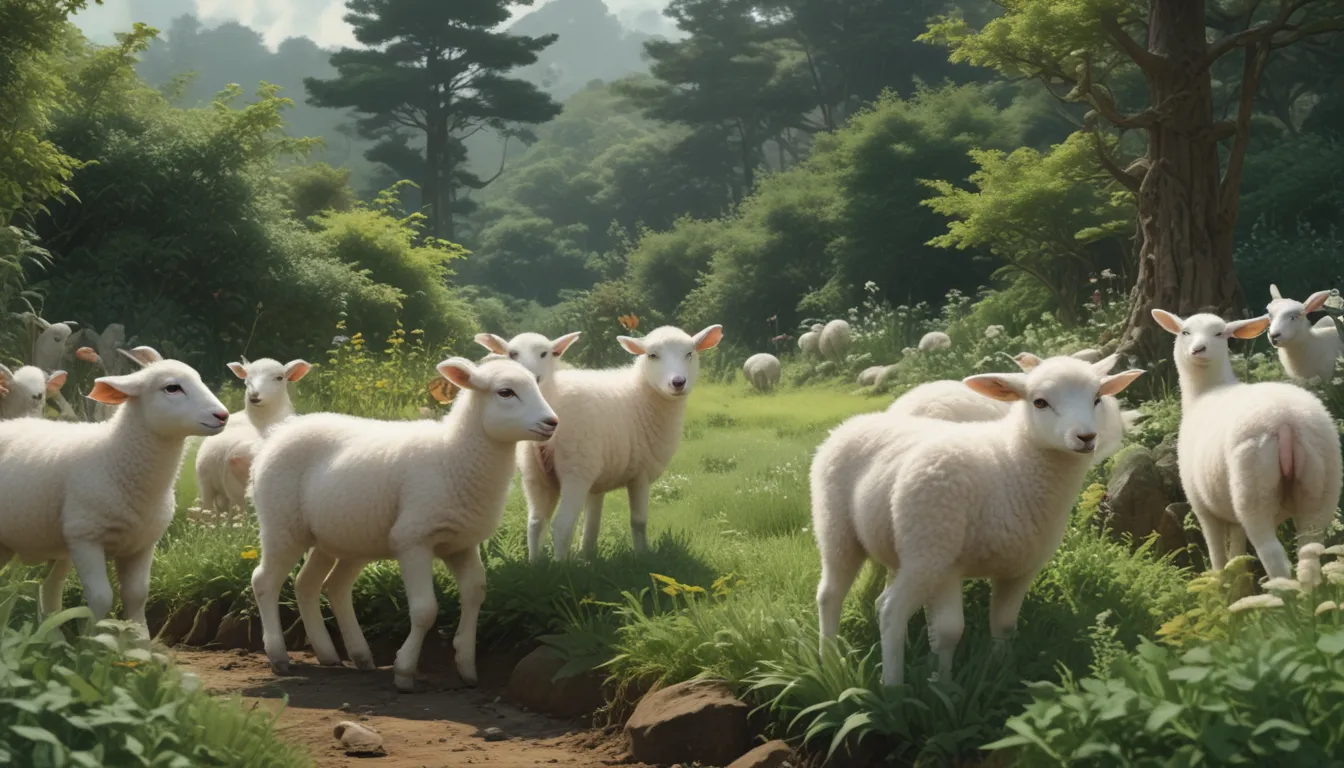How to Plant and Grow Lamb’s Ear: A Fuzzy and Fun Addition to Your Landscape

If you’re looking to add a unique and inviting touch to your garden, lamb’s ear, also known as Stachys byzantina, might be the perfect choice. This fluffy plant not only offers interesting visual appeal but is also soft to the touch, making it a delightful addition to any landscape.
Let’s dive into the world of lamb’s ear and explore everything you need to know to successfully plant and grow this charming plant in your garden.
Cultivation and History of Lamb’s Ear
Lamb’s ear, with its soft and silvery-green leaves, originated in the Middle East and can thrive in USDA Hardiness Zones 4 through 9. Its unique texture and appearance have earned it various nicknames such as wooly betony or woolly hedge-nettle.
Apart from its visual appeal, lamb’s ear is deeply rooted in history. Known for its astringent properties, this plant has been used for centuries as a natural “band-aid,” believed to treat ailments such as bee stings. It has also been utilized as a natural dressing for wounds and even as toilet paper.
While it has historical medicinal uses, today, lamb’s ear is primarily valued for its sensory appeal. Its soft texture and vibrant color make it a popular choice in sensory and therapy gardens. Additionally, it has found a place in historic gardens, including George Washington’s gardens at Mount Vernon.
From its unique leaves to its rapid growth and hardy nature, lamb’s ear is a versatile plant that can serve various purposes in your garden.
How to Grow Lamb’s Ear
Growing lamb’s ear is a straightforward process that involves a few key considerations to ensure its optimal growth and health. Here’s a step-by-step guide to help you cultivate this charming plant in your garden:
Planting Conditions:
- Soil: Lamb’s ear thrives in well-draining soil. If your soil is compacted or clay-like, consider adding compost or sand to enhance drainage.
- Light: While it prefers full sun, lamb’s ear can tolerate partial shade. Plants grown in partial shade tend to have more green leaves compared to those in full sun.
- Watering: Avoid watering from above to prevent the foliage from trapping water and developing powdery mildew. Once established, lamb’s ear is drought-tolerant and typically requires watering once a week.
Propagation Methods:
- From Seed: Starting from seeds is a viable option, but be prepared for a longer germination process and lower success rates. Ensure proper drainage and avoid overwatering to prevent mold issues.
- By Division: The most common method of propagation involves dividing mature plants. This approach is faster, more reliable, and takes advantage of the plant’s natural tendency to multiply.
Transplanting Tips:
- Timing: Transplant lamb’s ear in spring after the frost risk has passed or in early fall.
- Preparation: Amend the soil with compost, fertilizer, or organic matter to provide essential nutrients for the plant.
- Spacing: Provide ample space, at least 12 inches on all sides, to allow the plant to spread and grow properly.
Overall, growing lamb’s ear is a rewarding experience that can add texture and visual interest to your garden.
Maintenance and Pruning Tips
To ensure the health and vitality of your lamb’s ear plants, regular maintenance and pruning are essential. Here are some key maintenance tips to keep your plants thriving:
- Division: Divide plants every three or four years to prevent overcrowding and promote proper airflow.
- Pruning: Trim back old or dead leaves in the fall and spring to encourage new growth and prevent diseases.
- Fertilization: Apply a nitrogen-rich fertilizer in early spring to support the plant’s foliage and overall health.
By following these maintenance practices, you can help your lamb’s ear plants stay healthy and vibrant throughout the growing season.
Selecting Cultivars and Best Uses
When choosing lamb’s ear cultivars, consider factors such as size, color, and flowering patterns to suit your garden’s specific needs. Here are a few popular cultivars to consider:
- ‘Big Ear’: Known for its large and silver-green leaves, this flowerless variety is a common choice for many gardeners.
- ‘Cotton Boll’: Features white flowers and softer leaves, making it an ideal landscape plant that complements other species.
- ‘Primrose Heron’: A shorter variety with lime-green foliage and purple flowers, perfect for adding a pop of color to your garden.
Lamb’s ear is commonly used as a soft border or ground cover in gardens due to its prolific growth and easygoing nature. Additionally, it attracts beneficial insects like bees, making it ideal for pollinator and sensory gardens.
From its historical significance to its modern-day uses, lamb’s ear is a versatile and charming plant that can add texture and visual interest to any landscape.
Quick Reference Growing Guide
For a quick overview of planting and growing lamb’s ear, refer to this handy reference guide:
- Plant Type: Herbaceous perennial
- Native to: Middle East
- Hardiness (USDA Zone): 4-9
- Bloom Time: Spring, summer
- Exposure: Full to partial sun
- Spacing: 12-18 inches
- Height: Up to 32 inches
- Spread: Up to 30 inches
- Water Needs: Low
- Common Pests: Caterpillars, slugs, snails
- Common Diseases: Root rot, powdery mildew, rust
By following these guidelines and recommendations, you can cultivate vibrant and healthy lamb’s ear plants in your garden.
Wrapping Up
In conclusion, growing lamb’s ear is a rewarding and enjoyable experience that can enhance the beauty and texture of your garden. With its unique appearance, historical significance, and modern-day uses, this versatile plant offers a multitude of benefits for gardeners of all skill levels.
Whether you’re looking to add a touch of softness to your landscape or attract beneficial insects to your garden, lamb’s ear is a delightful and practical choice. By following the tips and guidelines outlined in this article, you can successfully plant and grow this charming plant in your outdoor space.
Do you have any experience growing lamb’s ear in your garden? Share your insights and tips in the comments below and let us know how this fuzzy and fun plant has transformed your landscape!
For more information on growing flowers and creating beautiful landscapes in your garden, be sure to explore our other articles on topics like flowering ground covers, native wildflower landscapes, and collecting flower seeds for planting.
By incorporating new sections, detailed information, and practical tips, this revised article provides a comprehensive guide to growing lamb’s ear, appealing to gardeners seeking valuable insights and expert advice.





